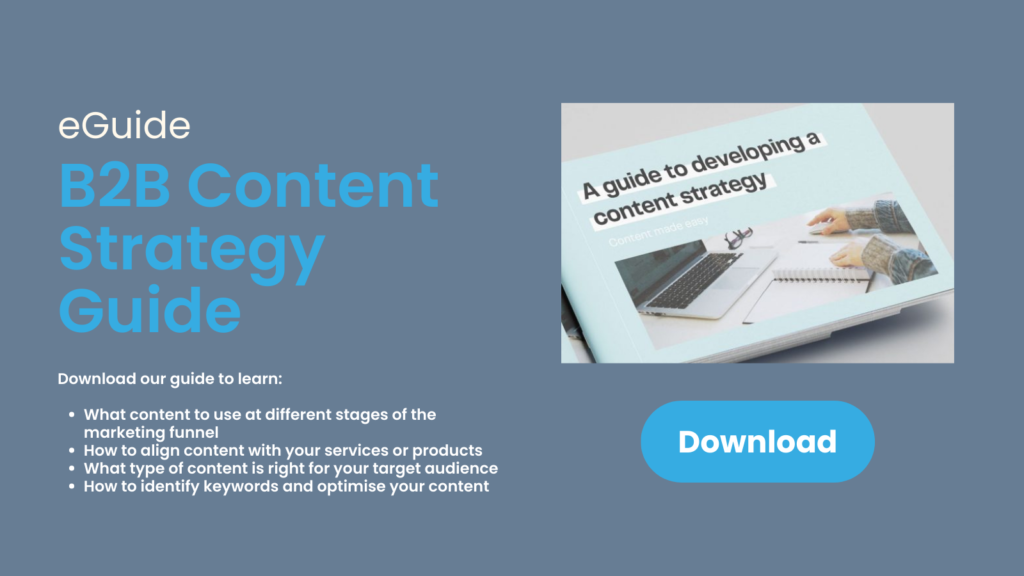I’ve been in content marketing for over 10 years and still the most common question I get asked is how to write engaging blog content and how to optimise it for SEO.
These two things don’t always sit comfortably together. When your blog content is packed full of keywords, the reading experience can be very poor. Moreover, search engines rank content on engagement metrics such as time spent on the page, and will penalise you for an unnatural use of keywords.
Therefore, in my opinion, writing engaging blog content is more important than SEO. And as you will find out if you continue to read…SEO will generally fall naturally into place if you take this approach.
What makes me the blog content expert?
As stated at the top, I’ve written blog content for different clients in different industries for several years. Many of the blog posts I wrote in the early days still continue to appear in top search results for the keywords I optimised them for. And more importantly, continue to engage and convert prospects into leads. This is proven by time spent on the page and what they do next: such as clicking on a link in a CTA.
So what is the secret of their success?
Unfortunately, there are no shortcuts when it comes to writing engaging blog content. You need to know your stuff, invest time in researching your topic and be able to write. However, there are some things that can make your content more engaging, and more effective.
Here are my words of wisdom:
Know your audience
Content is only engaging if it’s of interest to your target audience. That gets the content writer off the hook to some degree, because it means you don’t necessarily need to write wildly entertaining, witty or clever content to make it engaging.
But it does mean you really need to know your audience. What interests them, what they want to know about your topic, what language they speak (technical, layperson etc.), where they are in the marketing funnel, and how you can help them.
If you’re working with content writers who don’t ask these questions, alarm bells should start to ring! I’ve come across a few people in the past who haven’t, and the result is simply ineffective content that wastes everyone’s time.
Set a goal
Write each blog post with a specific purpose to give it direction and to take your audience on a journey. Typically you’ll want them to take an action of some description based on your content, such as visiting another page on your website or interacting with your business in some other way. By setting a goal at the start you can write your content so it builds up to a CTA, whether direct or more subtle.
Have a conversation
I believe that the most engaging blog content makes the reader feel like they’re having a conversation with you.
Imagine that you’re in the same room with a prospect. How would you start the conversation? What would you say to get their interest? What questions would they have for you? What do you want them to take away from your chat?
Thinking about blog content in this way provides a structure that enables you to communicate your message, while also putting the reader at the heart of your content.
That’s it. That’s all you need to write engaging blog content!
But what about SEO I hear you ask? Didn’t you promise that it would fall naturally into place?
Yes, it will. If you really understand your audience and what they want to know, you’ll naturally use the keywords and long tail keywords they will search with. The ones they use, in the language they use. Taking the conversational approach also helps you identify the questions they may have, which are often the things they will search for online. This helps you attract the right visitors to your content that have the right search intent.
Optimising your blog content for SEO
That said, once you have finished writing your highly engaging blog post you should review it from an SEO perspective. But I recommend that you don’t write with SEO in mind because that can result in an unnatural use of language and erode that engaging, conversational style.
I suggest you review your post and identify the primary keywords, preferably long tail keywords, that relates to the subject of your post. To make sure it’s the right keyword ask yourself the following:
- Is this what my target audience would search with to find my content?
- Does my content meet their expectations for that keyword?
Once you’ve identified your focus/primary keyword, including any related keywords, optimise your post. There are plenty of tools like Yoast SEO and Rank Math that can help you do this. These tools score your content based on your use of a primary keyword. They look for:
- Keywords in the SEO title
- Keywords in the meta description
- Keywords in the URL
- Keywords at the beginning of your blog post (in the first sentence)
- Use of keywords throughout the content
- Content length
- Keywords in headings
- Keyword density – not to much or little
- Links to external and internal URLs
- Content readability
Helpfully, the tools mentioned above will quite literally walk you through this exercise, make suggestions and flag up where there’s room for improvement.
It’s a wrap
So there you have it. In summary, writing engaging blog content and optimising it for SEO is all about knowing your audience, knowing what content they want, having a conversation and meeting their expectations.
Please leave a comment below if you have any hacks or tips, have a question or would like to discuss anything else about the wonderful world of content marketing!





